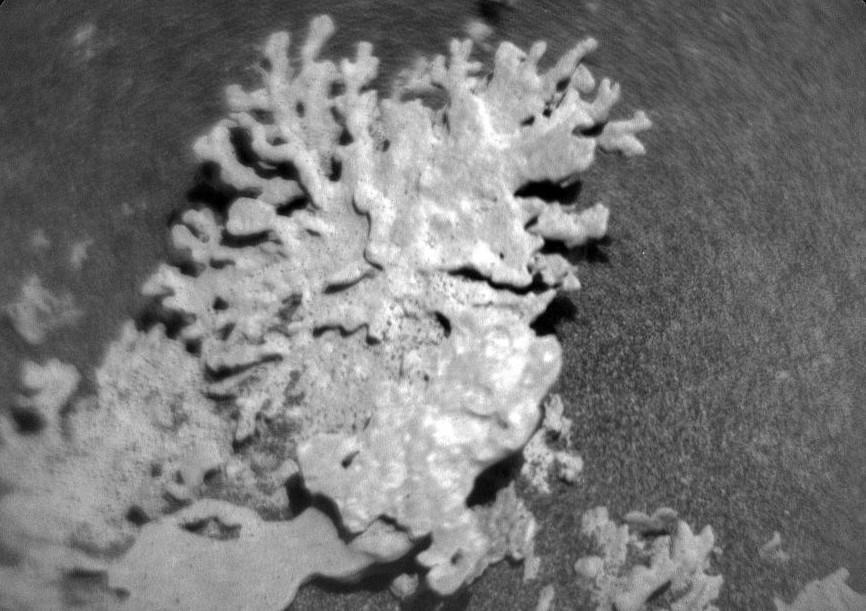
Coral-shaped rock spotted on Mars, NASA shares pic
NASA’s Curiosity Mars rover has made another fascinating discovery on the Red Planet, sending back black and white images of a rock on the Martian surface that bears a striking resemblance to a piece of coral. The rock was found in the Gale Crater, a large impact basin on Mars, and is estimated to be around a billion years old.
The image, captured by the rover’s ChemCam instrument, shows a rock with a unique, coral-like shape. The rock is approximately 5 centimeters (2 inches) in diameter and has a distinctive, branching pattern that is reminiscent of coral found on Earth.
According to NASA, the coral-shaped rock is believed to have formed through a process known as “concretion,” where minerals precipitate out of water and accumulate in a rock. This process can occur in a variety of environments, including in the presence of water, which is a key ingredient for life.
The discovery of the coral-shaped rock is significant because it provides evidence of the presence of water on Mars in the past. Water is a crucial ingredient for life, and the discovery of ancient water sources on Mars increases the chances of finding evidence of past or present life on the planet.
The Gale Crater, where the rock was found, is a prime example of a Martian impact basin. Impact basins are formed when a large asteroid or comet crashes into the surface of a planet, creating a crater. The Gale Crater is one of the largest impact basins on Mars, measuring approximately 154 kilometers (96 miles) in diameter.
The Curiosity rover has been exploring the Gale Crater since 2012, and has made several significant discoveries about the history and geology of the crater. The rover has found evidence of ancient lakes and rivers, as well as signs of water and methane in the Martian atmosphere.
The ChemCam instrument, which captured the image of the coral-shaped rock, is a laser-induced breakdown spectroscopy (LIBS) instrument that can analyze the chemical composition of rocks and soils. LIBS works by firing a laser at a target and analyzing the light emitted by the resulting plasma. This allows scientists to determine the chemical composition of the target without having to physically touch it.
The discovery of the coral-shaped rock is just the latest in a series of fascinating discoveries made by the Curiosity rover. The rover has been exploring Mars for over nine years, and has made numerous discoveries about the history and geology of the planet.
In addition to its discoveries about the Martian geology, the Curiosity rover has also provided valuable information about the Martian climate and atmosphere. The rover has found evidence of ancient lakes and rivers, as well as signs of water and methane in the Martian atmosphere.
The discovery of the coral-shaped rock is a reminder of the many wonders that await us on Mars. As we continue to explore the Red Planet, we may uncover even more evidence of past or present life, and gain a deeper understanding of the planet’s history and geology.
Source: https://www.jpl.nasa.gov/images/pia26634-curiositys-chemcam-views-a-rock-shaped-like-coral/






